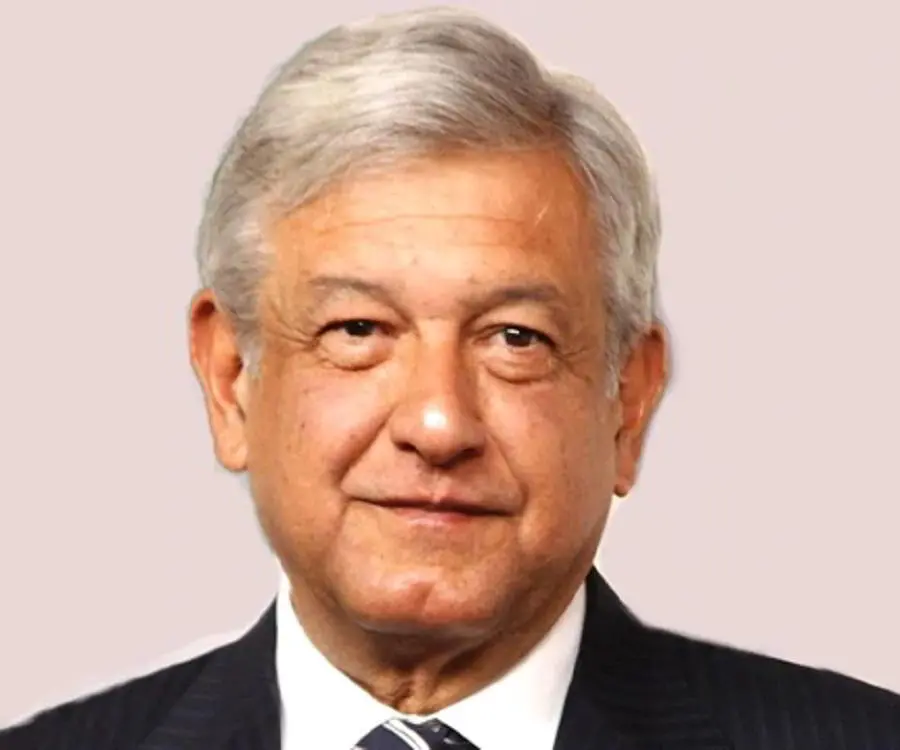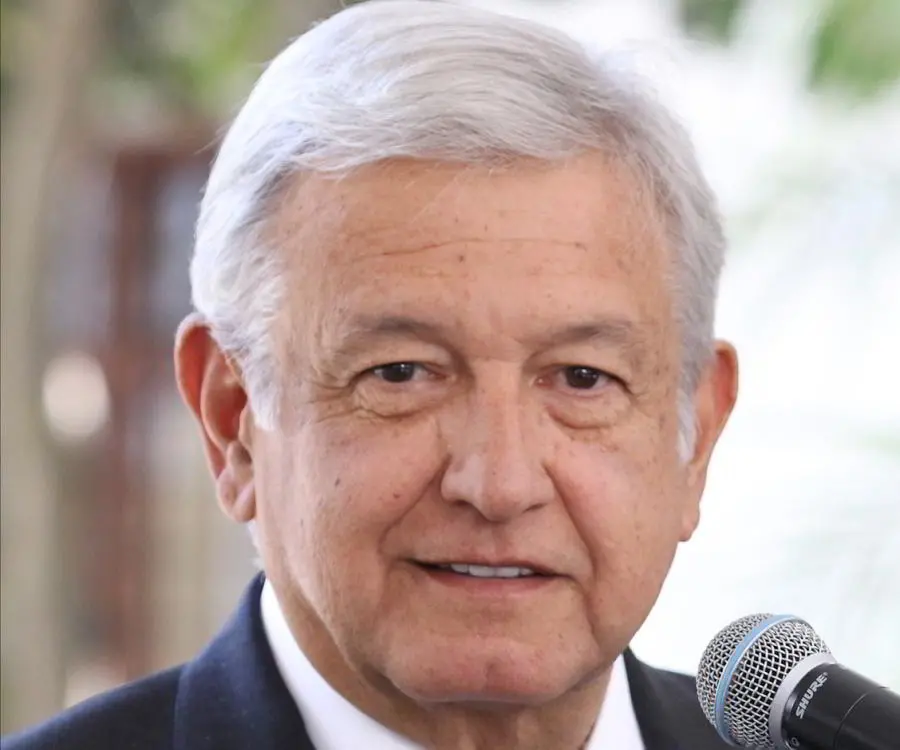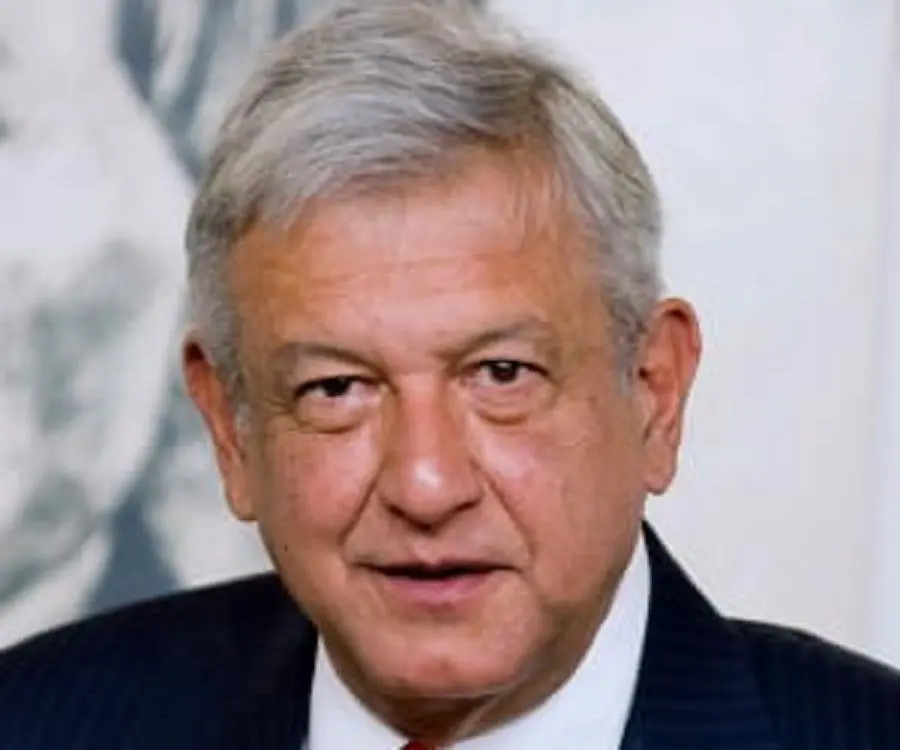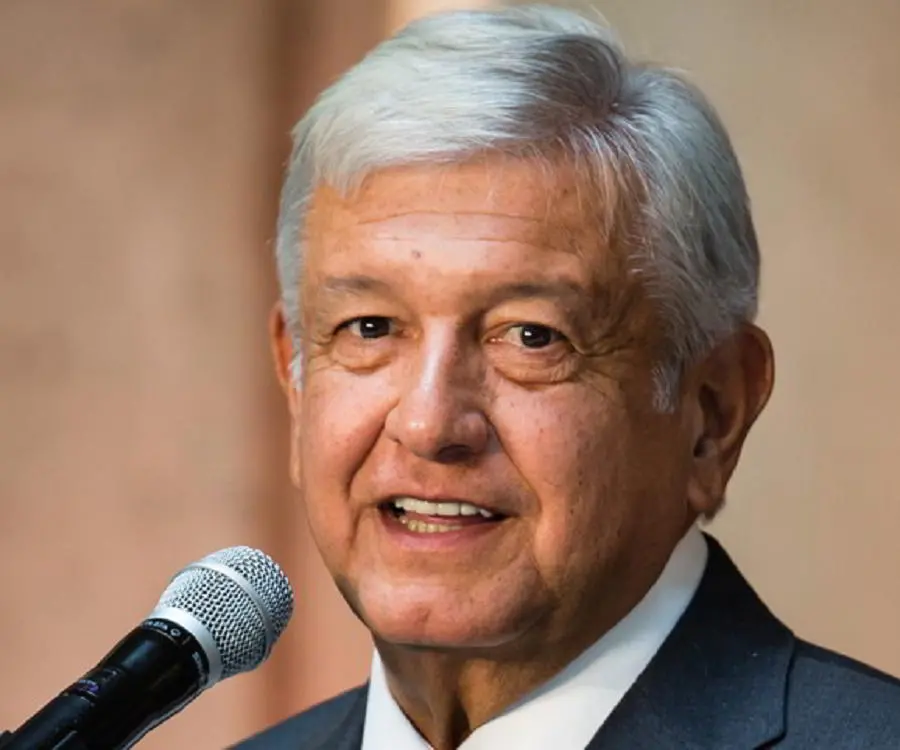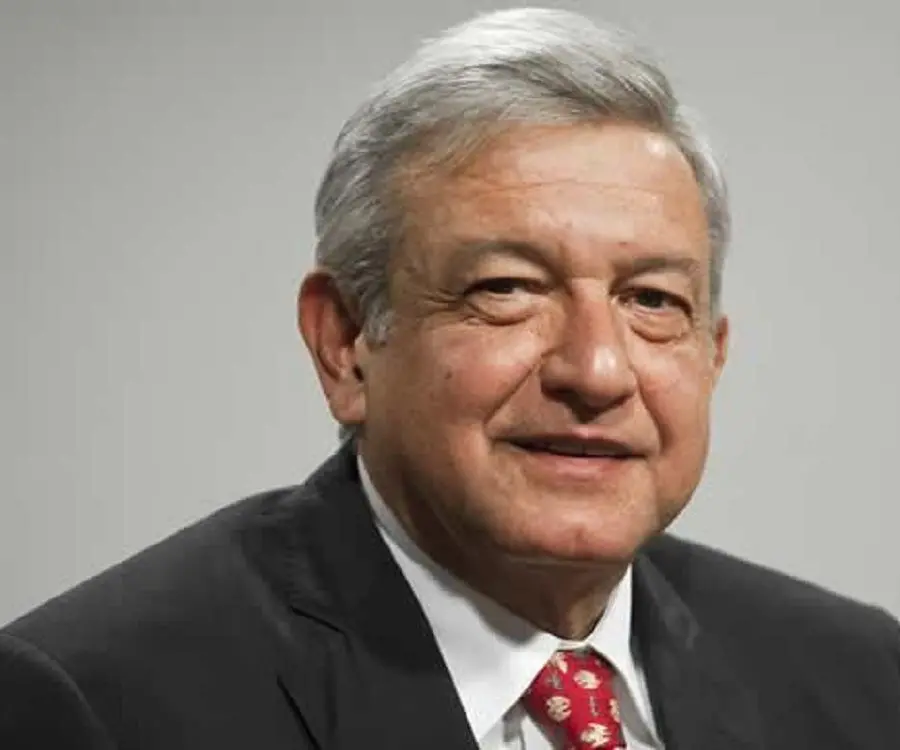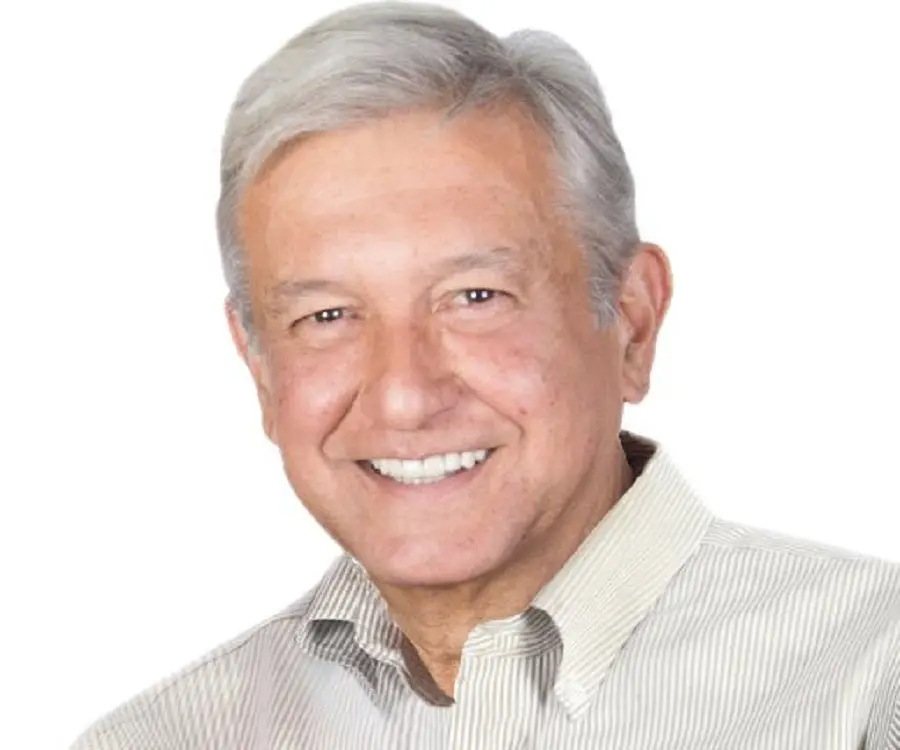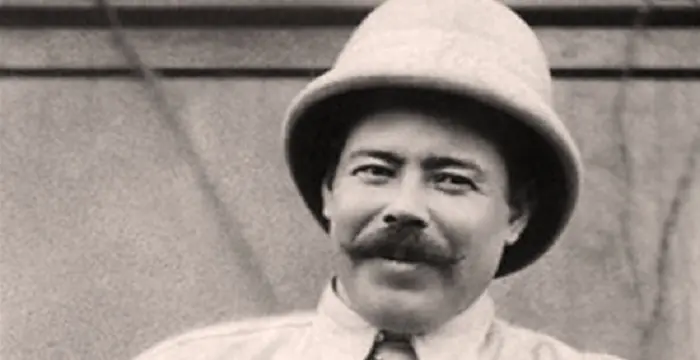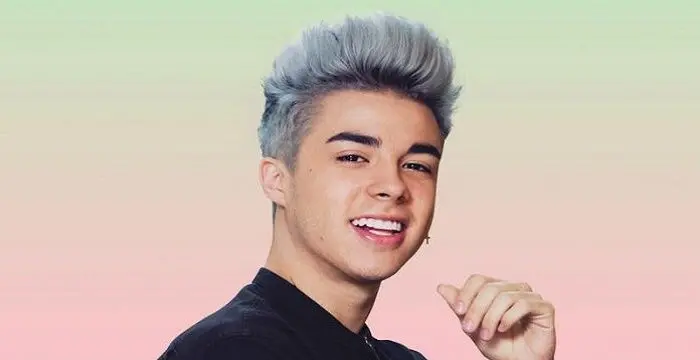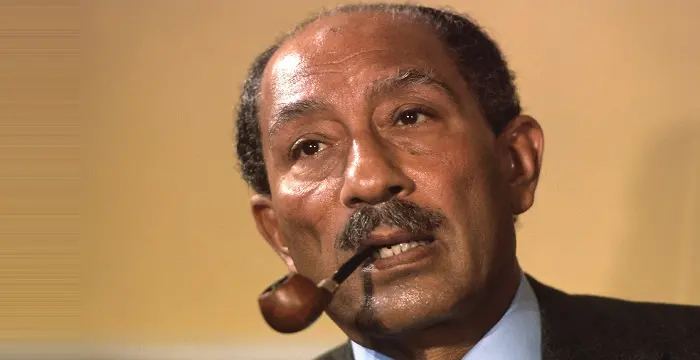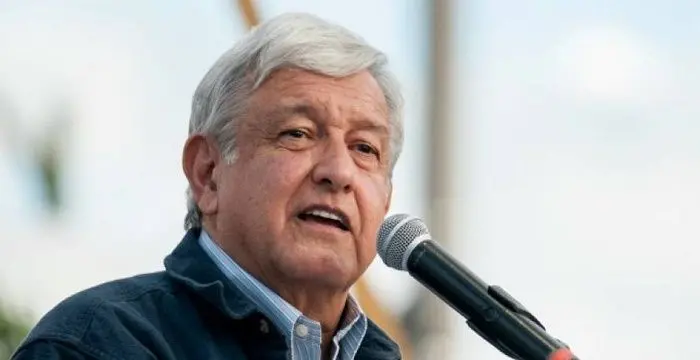
Andrés Manuel López Obrador - Politician, Career and Family
Andrés Manuel López Obrador's Personal Details
Andres Manuel Lopez Obrador is a Mexican left-wing politician
| Information | Detail |
|---|---|
| Birthday | November 13, 1953 |
| Nationality | Mexican |
| Famous | Leaders, Political Leaders, Mexican Men, Politician |
| Nick names | AMLO |
| Spouses | Beatriz Gutiérrez Müller (m. 2006), Rocío Beltrán Medina (m. 1979–2003) |
| Childrens | Andrés Manuel López Beltrán, Gonzalo Alfonso López Beltrán, Jesús Ernesto López Gutiérrez, José Ramón López Beltrán |
| Universities |
|
| Notable Alumnis |
|
| Founder / Co-Founder |
|
| Birth Place | Macuspana |
| Religion | Catholicism |
| Height | 173 |
| Gender | Male |
| Sun Sign | Scorpio |
| Born in | Macuspana |
| Famous as | Politician |
// Famous Politician
Sebastian Coe
Sebastian Coe is a British former track and field athlete turned politician. This biography of Sebastian Coe provides detailed information about his childhood, life, achievements, works & timeline.
Stephen Lewis
Stephen Lewis is a Canadian politician, broadcaster, diplomat and professor. This biography profiles his childhood, career, works, life, achievements and timeline.
Oswald Mosley
Sir Oswald Ernald Mosley was a British politician known for his pro-fascist beliefs. This biography profiles his childhood, family, personal life, opinions, career, etc.
Andrés Manuel López Obrador's photo
Who is Andrés Manuel López Obrador?
Andres Manuel Lopez Obrador, popularly known as AMLO, is a Mexican left-wing politician and a prolific writer. Born into a middle class family, he joined politics at the age of 23 as a member of the Institutional Revolutionary Party (PRI). Beginning his career as the director of Instituto Indigenista at Tabasco, he worked tirelessly for the benefit of the indigenous people of the area. He left PRI when his endeavor to instill inner party democracy failed; eventually joined National Democratic Front (PRD in later years) and ran for governorship of Tabasco on its ticket at the age of 35. When he lost the election, he started working at the grassroots, not only to create a base for his party, but also to save environment. He was PRD’s, presidential candidate in 2006 and again in 2012; but lost on both the occasions. Later, he left PRD to form MORENA (National Regeneration Movement). He is currently a candidate for the 2018 presidential elections.
// Famous Mexican Men
Ariel Camacho
Ariel Camacho was a popular Mexican singer-songwriter. Check out this biography to know about his birthday, childhood, family life, achievements and fun facts about him.
Pancho Villa
Pancho Villa is one of the most renowned names of the ‘Mexican Revolution’ who was also the Governor of Chihuahua. This biography provides detailed information about his childhood, profile, career and timeline
Mario Bautista
Mario Bautista is a famous Mexican pop singer, R&B dancer, and social media star. Let’s take a look at his family, personal life, career, age, birthday, etc.
Childhood & Early Years
Andres Manuel López Obrador was born on November 13, 1953 in the town of Tepetitán, located under the municipality of Macuspana in the southern Mexican state of Tabasco. His father, Andrés López Ramón, was a trader. His mother’s name was Manuela Obrador González.
He was born second of his parents’ seven children. His elder brother, José Ramón López Obrador, died young while playing with a gun. Among his younger siblings are four brothers named Arturo, Pío Lorenzo, José Ramiro, Martín and a sister named Candelaria.
His childhood friends remember him as friendly, smiling and calm. He had a very free and happy childhood. Boating in the lagoons lying around the town was his favorite pastime. He also played baseball in centre field position. At one time, he also thought of becoming a professional baseball player.
In 1973, he entered National Autonomous University of Mexico (UNAM), He gradiated in 1976 in Political Science and Public Administration. Also in 1976, he joined the Institutional Revolutionary Party (PRI) and supported Carlos Pellicer Cámara el Poeta de América’s campaign.
Early Career
In 1977, López Obrador began his career as the director of the Instituto Indigenista in Tabasco. During his tenure, he promoted the literature of the indigenous people, concurrently launching several social programs for the betterment of the Chontal Maya community in the state.
Through Sandino housing program, he built 1906 houses and 267 latrines in the municipalities of Centla, Center, Jalpa de Méndez, Jonuta, Macuspana, Nacajuca, Tacotalpa and Tenosique, benefitting the indigenous population. He also launched Livestock Credit Program for the marginalized population in his area.
In the Municipality of Nacajuca, he had ridges built in order to retrieve agricultural land. This he distributed among the landless indigenous people so that they could now grow crops for self consumption or cash. He also built schools and health centers for them.
López Obrador remained with Instituto Indigenista until 1982. In the same year, he successfully coordinated the election campaign of Enrique González Pedrero, who became the governor of Tabasco.
Towards the beginning of 1983, López Obrador was elected president of the state executive committee of the Institutional Revolutionary Party (PRI). He resigned from his post in November, 1983 when his endeavor to democratize the proceedings within the party met with objection from the party members.
His resignation as the President of the party’s state unit almost jeopardized his political career. But shortly, he was rescued from this political void when he was invited by Clara Jusidman to take up the post of the director of social promotion at the Instituto Nacional del Consumidor.
In 1984, he moved to Mexico City to take up his post at the Instituto Nacional del Consumidor. A prolific writer, he published his first book, ‘The first steps, Tabasco, 1810-1867’ in 1986. In the following year, he submitted his thesis and earned his PhD.
In 1988, he published his second book, ‘Del esplendor a la sombra: The Restored Republic, Tabasco, 1867-1976’. In the same year, he resigned from his position to join Democratic Current, a newly formed dissenting faction of the PRI. Eventually, it led to the formation of the National Democratic Front (FDN).
Election Candidate
FDN, which was a coalition of small leftist parties like Mexican Socialist Party (PMS), the Popular Socialist Party (PPS) and the Cardenista Front National Reconstruction Party (PFCRN), nominated López Obrador as a candidate for the post of the governor of Tabasco. He lost miserably, getting only 20.9% of the vote.
After the 1988 election, FDN demanded its annulment, accusing the ruling party of electoral malpractices including forcibly expulsion of its representatives from the polling booths. When their plea was ignored, López Obrador went on a tour, making his countrymen aware of “the climate of authoritarianism and repression”.
The government reacted to the allegations violently, illegally arresting many of their activists. Some of whom never returned. They also used the state police to evict the front’s elected representatives from municipal bodies.
In 1989, FDN consolidated to form the Party of the Democratic Revolution (PRD) with López Obrador becoming the party president in the state of Tabasco. In the following year, he published his third book, ‘Tabasco, Victim of a Fraud’, describing the 1988 Tabasco elections as a scam.
In 1991, when PDR lost the election even in seats it had expected to win, López Obrador joined a march, ‘Exodus for Democracy’, which started on November 25, 1991 from Villahermosa, capital of Tabasco. Leading from the front, walking all the way, he reached Mexico City on January 11, 1992.
Their protest led to the resignation of the governor of Tabasco, Salvador Neme Castillo on 28 of January, 1992. In May, he moved to Veracruz to campaign for Heberto Castilloas, PRD’s candidate for the gubernatorial election in the state.
In early 1990s, he also started organizing grassroots protests against environmental damage caused by the state-owned Mexican Petroleum Company (PEMEX) in Tabasco. Concurrently, he also continued his political activities, strengthening the party from the grassroots.
In 1994, López Obrador stood for gubernatorial election in Tabasco, losing to the PRI candidate, Roberto Madrazo Pintado, winning only 38.7% vote. After the election, he attacked his opponent of fraudulent activities, accusing him spending more than he was allowed to.
He also accused the authorities of irregularities in more than 70% of the boxes, an accusation corroborated by independent agencies like the Instituto Federal Electoral. The Human Right Committee in Tabasco also called the election a farce. As expected, Madrazo Pintado refused to acknowledge any irregularity in his election.
On April 22, 1995, López Obrador, started another march to Mexico City, demanding annulment of the election, also raising other relevant issues, including the privatization of Mexican Petroleum Company. Christened ‘Caravan for Democracy’, the march increased López Obrador’s popularity, making him one of the most important leaders of PRD.
In 1996, he published his fourth book, ‘Between History and Hope: Corruption and Democratic Struggle in Tabasco’. In the same year, he intensified his agitation against Mexican Petroleum Company, trying to block oil wells, appearing on television drenched in blood from confrontation with the police, becoming more popular for it.
Party President
In 1996, López Obrador was elected to the post of the President of PRD, occupying the position from August 2, 1996 to April 10, 1999. During the tenure, the party’s presence in the national politics increased manifold.
In the 1997 legislative election, the party won 125 seats, thus becoming the second political force in the Chamber of Deputies. In the same year, it was able to obtain absolute majority in the Legislative Assembly of Mexican City, forming government under one of its founder members, Cuauhtémoc Cárdenas Solórzano.
In 1998, the PRD formed alliance with the Labor Party and the Ecologist Green Party of Mexico, subsequently winning the state election in Tlaxcala and in Zacatecas. In both the places, it was able to have their own men elected as Governor and form government.
In 1999, the PRD won the state election in Baja California Sur in alliance with the Labor Party. In the same year, López Obrador published his fifth book, ‘Fobaproa: Expediente Abierto: Resena y Archivo’.
Mayor of Mexico City
In July 2000, López Obrador was elected Jefe de Gobierno (Head of Government), Mexico City. In this capacity, he initiated a number of social programs, extending financial assistance to the more vulnerable population of the city. The Universidad Autónoma de la Ciudad de México was also built in his tenure.
He also initiated a zero tolerance policy towards the escalating crime in Mexico City, enlisting the help of former New York City mayor Rudy Giuliani in this. To provide housing to the city population, he encouraged private investment in real estate, offering tax benefits to construction firms.
He also initiated programs for restoring the historic downtown area of Mexico City, concurrently modernizing the area, creating beautiful residential as well as shopping area for the middle class population. He also took up various schemes to improve the flow of traffic within the city.
In May 2004, his detractors tried to impeach him for contempt of court. Many believed that the move was politically motivated, aimed at disqualifying him as a presidential candidate. The impeachment proceeding was dropped when one million people showed their support by marching through the city in April 2005.
Attempt for Mexican Presidency
In September 2005, López Obrador was nominated as PRD’s presidential pre-candidate for the 2006 general election. By then, he had begun his campaign with ‘50 basic commitments to the people of Mexico’, touring across the country, meeting number of delegates.
Early polls placed him far ahead of his opponent, Felipe Calderón Hinojosa. The exit poll also indicated his victory. But when the results were declared it was found that Calderón had won by a margin of 0.56% of votes. It led to a large scale protest.
The Federal Electoral Tribunal ruled that the election was fair, paving the way for Calderón to be sworn in as the President. Thereafter, López Obrador intensified his agitation, inaugurating himself as the “legitimate president” of a parallel government at a massive public ceremony in the Zócalo, Mexico City.
In 2012, López Obrador was once again nominated by PRD as their presidential candidate against PRI’s Enrique Peña Nieto and PAN’s Josefina Vázquez Mota, finishing second in the race, acquiring 31.64% vote. Although he accused PRI of vote buying and overspending, a partial recount of vote upheld Peña Nieto’s victory.
Forming MORENA
On September 9, 2012, López Obrador announced that he was going to leave PRD “on best of terms”. On October 2, he created ‘Movimiento Regeneración Nacional (MORENA; the National Regeneration Movement) as a civil association, registering it as a national party with the National Electoral Institute on July 9, 2014.
In 2017, he presented ‘Alternative Project of Nation 2018-2024’. Shortly thereafter, he made electoral alliance with Social Encounter Party and Labor Party. Entitled ‘Juntos Haremos Historia’ (Together We Will Make History), the alliance nominated him as the pre-candidate for the 2018 federal election, scheduled to be held on July 1.
In his election speeches, he continues to oppose the North American Free Trade Agreement (NAFTA) and the present regime’s decision to open up Mexico’s energy industry to private investment. Although the international press calls him populist for this, he remains steadfast in his decision.
All along, he has continued to write, publishing his 15th book, ‘2018 La salida’ in 2017. In it he reaffirmed that corruption is the main problem of Mexico, calling on his countrymen to end corruption and make honesty a way of life.
Personal Life & Legacy
In 1979, López Obrador married Rocío Beltrán Medina, a former teacher and a writer. He had three children with her, Jose Ramon López Beltrán, Andres Manuel López Beltrán and Gonzalo Alfonso López Beltrán, with her. Rocío Beltrán Medina died in 2003.
In 2006, he married Beatriz Gutiérrez Müller. Together they have son named Jesús Ernesto López Gutiérrez.
// Famous Political Leaders
Edi Rama
Edi Rama is the current Prime Minister of Albania. Check out this biography to know about his childhood, life, achievements, works & timeline.
Khalifa bin Zayed Al Nahyan
Sheikh Khalifa bin Zayed Al Nahyan is the current President of the United Arab Emirates (UAE). Check out this biography to know about his birthday, childhood, family life, achievements and fun facts about him.
Leo Varadkar
Cam Leo Varadkar is the current Taoiseach—the Prime Minister—of the Republic of Ireland. Check out this biography to know about his childhood, family life, achievements and other facts about his life.
Andrés Manuel López Obrador biography timelines
- // 1906Through Sandino housing program, he built 1906 houses and 267 latrines in the municipalities of Centla, Center, Jalpa de Méndez, Jonuta, Macuspana, Nacajuca, Tacotalpa and Tenosique, benefitting the indigenous population. He also launched Livestock Credit Program for the marginalized population in his area.
- // 13th Nov 1953Andres Manuel López Obrador was born on November 13, 1953 in the town of Tepetitán, located under the municipality of Macuspana in the southern Mexican state of Tabasco. His father, Andrés López Ramón, was a trader. His mother’s name was Manuela Obrador González.
- // 1973In 1973, he entered National Autonomous University of Mexico (UNAM), He gradiated in 1976 in Political Science and Public Administration. Also in 1976, he joined the Institutional Revolutionary Party (PRI) and supported Carlos Pellicer Cámara el Poeta de América’s campaign.
- // 1977In 1977, López Obrador began his career as the director of the Instituto Indigenista in Tabasco. During his tenure, he promoted the literature of the indigenous people, concurrently launching several social programs for the betterment of the Chontal Maya community in the state.
- // 1979In 1979, López Obrador married Rocío Beltrán Medina, a former teacher and a writer. He had three children with her, Jose Ramon López Beltrán, Andres Manuel López Beltrán and Gonzalo Alfonso López Beltrán, with her. Rocío Beltrán Medina died in 2003.
- // 1982López Obrador remained with Instituto Indigenista until 1982. In the same year, he successfully coordinated the election campaign of Enrique González Pedrero, who became the governor of Tabasco.
- // 1983Towards the beginning of 1983, López Obrador was elected president of the state executive committee of the Institutional Revolutionary Party (PRI). He resigned from his post in November, 1983 when his endeavor to democratize the proceedings within the party met with objection from the party members.
- // 1984In 1984, he moved to Mexico City to take up his post at the Instituto Nacional del Consumidor. A prolific writer, he published his first book, ‘The first steps, Tabasco, 1810-1867’ in 1986. In the following year, he submitted his thesis and earned his PhD.
- // 1988In 1988, he published his second book, ‘Del esplendor a la sombra: The Restored Republic, Tabasco, 1867-1976’. In the same year, he resigned from his position to join Democratic Current, a newly formed dissenting faction of the PRI. Eventually, it led to the formation of the National Democratic Front (FDN).
- // 1988After the 1988 election, FDN demanded its annulment, accusing the ruling party of electoral malpractices including forcibly expulsion of its representatives from the polling booths. When their plea was ignored, López Obrador went on a tour, making his countrymen aware of “the climate of authoritarianism and repression”.
- // 1988In 1989, FDN consolidated to form the Party of the Democratic Revolution (PRD) with López Obrador becoming the party president in the state of Tabasco. In the following year, he published his third book, ‘Tabasco, Victim of a Fraud’, describing the 1988 Tabasco elections as a scam.
- // 1991In 1991, when PDR lost the election even in seats it had expected to win, López Obrador joined a march, ‘Exodus for Democracy’, which started on November 25, 1991 from Villahermosa, capital of Tabasco. Leading from the front, walking all the way, he reached Mexico City on January 11, 1992.
- // 1992Their protest led to the resignation of the governor of Tabasco, Salvador Neme Castillo on 28 of January, 1992. In May, he moved to Veracruz to campaign for Heberto Castilloas, PRD’s candidate for the gubernatorial election in the state.
- // 1994In 1994, López Obrador stood for gubernatorial election in Tabasco, losing to the PRI candidate, Roberto Madrazo Pintado, winning only 38.7% vote. After the election, he attacked his opponent of fraudulent activities, accusing him spending more than he was allowed to.
- // 1995On April 22, 1995, López Obrador, started another march to Mexico City, demanding annulment of the election, also raising other relevant issues, including the privatization of Mexican Petroleum Company. Christened ‘Caravan for Democracy’, the march increased López Obrador’s popularity, making him one of the most important leaders of PRD.
- // 1996In 1996, he published his fourth book, ‘Between History and Hope: Corruption and Democratic Struggle in Tabasco’. In the same year, he intensified his agitation against Mexican Petroleum Company, trying to block oil wells, appearing on television drenched in blood from confrontation with the police, becoming more popular for it.
- // 1996In 1996, López Obrador was elected to the post of the President of PRD, occupying the position from August 2, 1996 to April 10, 1999. During the tenure, the party’s presence in the national politics increased manifold.
- // 1997In the 1997 legislative election, the party won 125 seats, thus becoming the second political force in the Chamber of Deputies. In the same year, it was able to obtain absolute majority in the Legislative Assembly of Mexican City, forming government under one of its founder members, Cuauhtémoc Cárdenas Solórzano.
- // 1998In 1998, the PRD formed alliance with the Labor Party and the Ecologist Green Party of Mexico, subsequently winning the state election in Tlaxcala and in Zacatecas. In both the places, it was able to have their own men elected as Governor and form government.
- // 1999In 1999, the PRD won the state election in Baja California Sur in alliance with the Labor Party. In the same year, López Obrador published his fifth book, ‘Fobaproa: Expediente Abierto: Resena y Archivo’.
- // 2000In July 2000, López Obrador was elected Jefe de Gobierno (Head of Government), Mexico City. In this capacity, he initiated a number of social programs, extending financial assistance to the more vulnerable population of the city. The Universidad Autónoma de la Ciudad de México was also built in his tenure.
- // 2004In May 2004, his detractors tried to impeach him for contempt of court. Many believed that the move was politically motivated, aimed at disqualifying him as a presidential candidate. The impeachment proceeding was dropped when one million people showed their support by marching through the city in April 2005.
- // 2005In September 2005, López Obrador was nominated as PRD’s presidential pre-candidate for the 2006 general election. By then, he had begun his campaign with ‘50 basic commitments to the people of Mexico’, touring across the country, meeting number of delegates.
- // 2006In 2006, he married Beatriz Gutiérrez Müller. Together they have son named Jesús Ernesto López Gutiérrez.
- // 2012In 2012, López Obrador was once again nominated by PRD as their presidential candidate against PRI’s Enrique Peña Nieto and PAN’s Josefina Vázquez Mota, finishing second in the race, acquiring 31.64% vote. Although he accused PRI of vote buying and overspending, a partial recount of vote upheld Peña Nieto’s victory.
- // 2012On September 9, 2012, López Obrador announced that he was going to leave PRD “on best of terms”. On October 2, he created ‘Movimiento Regeneración Nacional (MORENA; the National Regeneration Movement) as a civil association, registering it as a national party with the National Electoral Institute on July 9, 2014.
- // 2017In 2017, he presented ‘Alternative Project of Nation 2018-2024’. Shortly thereafter, he made electoral alliance with Social Encounter Party and Labor Party. Entitled ‘Juntos Haremos Historia’ (Together We Will Make History), the alliance nominated him as the pre-candidate for the 2018 federal election, scheduled to be held on July 1.
- // 2017All along, he has continued to write, publishing his 15th book, ‘2018 La salida’ in 2017. In it he reaffirmed that corruption is the main problem of Mexico, calling on his countrymen to end corruption and make honesty a way of life.
// Famous Leaders
Edi Rama
Edi Rama is the current Prime Minister of Albania. Check out this biography to know about his childhood, life, achievements, works & timeline.
Tecumseh
Tecumseh was a Native American leader of the Shawnee clan. This biography profiles his childhood, life and timeline.
Khalifa bin Zayed Al Nahyan
Sheikh Khalifa bin Zayed Al Nahyan is the current President of the United Arab Emirates (UAE). Check out this biography to know about his birthday, childhood, family life, achievements and fun facts about him.
Anwar Sadat
Anwar Sadat was the third President of Egypt and has been awarded the Nobel Prize for his peace initiatives. To know more about his childhood, career, profile and timeline read on the following biography.
Leo Varadkar
Cam Leo Varadkar is the current Taoiseach—the Prime Minister—of the Republic of Ireland. Check out this biography to know about his childhood, family life, achievements and other facts about his life.
Swami Vivekananda
Swami Vivekananda was the chief disciple of Sri Ramakrishna, and was responsible for awakening India spiritually. Check this biography to know in detail about his life, profile and timeline.
Andrés Manuel López Obrador's FAQ
What is Andrés Manuel López Obrador birthday?
Andrés Manuel López Obrador was born at 1953-11-13
Where is Andrés Manuel López Obrador's birth place?
Andrés Manuel López Obrador was born in Macuspana
What is Andrés Manuel López Obrador nationalities?
Andrés Manuel López Obrador's nationalities is Mexican
What is Andrés Manuel López Obrador nick names?
Andrés Manuel López Obrador's nickNames is AMLO
Who is Andrés Manuel López Obrador spouses?
Andrés Manuel López Obrador's spouses is Beatriz Gutiérrez Müller (m. 2006), Rocío Beltrán Medina (m. 1979–2003)
Who is Andrés Manuel López Obrador childrens?
Andrés Manuel López Obrador's childrens is Andrés Manuel López Beltrán, Gonzalo Alfonso López Beltrán, Jesús Ernesto López Gutiérrez, José Ramón López Beltrán
What was Andrés Manuel López Obrador universities?
Andrés Manuel López Obrador studied at National Autonomous University Of Mexico, National Autonomous University of Mexico
What was Andrés Manuel López Obrador notable alumnis?
Andrés Manuel López Obrador's notable alumnis is National Autonomous University Of Mexico, National Autonomous University Of Mexico
Which company or organization was founded by Andrés Manuel López Obrador?
Andrés Manuel López Obrador was the founder/co-founder of Party of the Democratic Revolution
What is Andrés Manuel López Obrador's religion?
Andrés Manuel López Obrador's religion is Catholicism
How tall is Andrés Manuel López Obrador?
Andrés Manuel López Obrador's height is 173
What is Andrés Manuel López Obrador's sun sign?
Andrés Manuel López Obrador is Scorpio
How famous is Andrés Manuel López Obrador?
Andrés Manuel López Obrador is famouse as Politician



